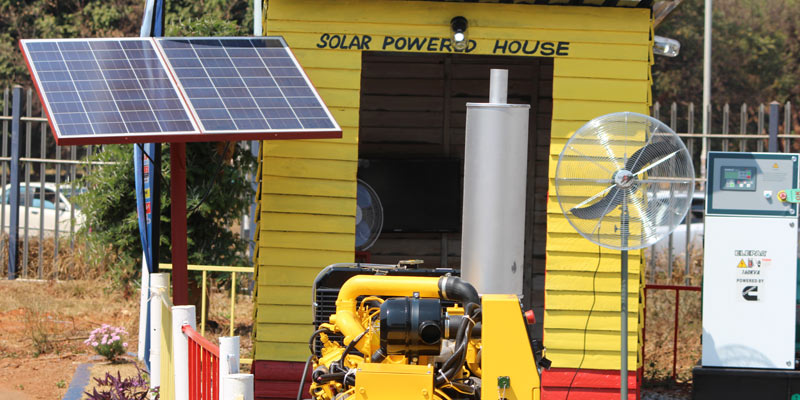The Article below is a sponsored article with content supplied by Clamore Power. Please see our policy on sponsored stories.
In our mission to understand GOING SOLAR, last week we started looking at solar power systems major components. The four major components we are looking at before we design a basic system are the following:
- Inverter
- Battery
- Charge Controller or regulator
- Solar Panel
We have already taken a closer look at the SOLAR PANEL and this week we look at the Solar Charge Controller.
The Solar Charge controller or regulator is placed between the battery and the solar panel, and in DC systems also between the load and battery. This critical component can be defined as a device that prevents the solar panels from over-charging the battery when it is full of charge, and also serves to protect the battery from being dangerously over-discharged by the loads attached.
The charge controller basically takes the erratic raw power produced by the solar panels and attempts to make it smooth before passing it onto the battery for storage.
Solar charge controllers come in various sizes with various capabilities. The most important and common to 90% of charge controllers is the “3 stage charging capability”.
Let’s try and simplify .
“3 stage charging”
The most efficient way to charge a solar battery is to first flood it with as much power as you can (we will discuss this in detail when we talk battery’s) this stage is called bulk charging. During this stage the battery is charged at the highest current (amps) and volts allowable by the battery’s structure and size. Once the battery is near full, the second stage starts at a lower voltage and less current (amps) this stage is called the absorption stage. During this stage the battery is pushed slowly and further to its full state. Once at full charge the battery is now maintained at that full position in what is commonly known as the trickle charge stage. During this final stage the battery is held at the full voltage with an occasional small burst of current and voltage.
Regulators differ on how well they all perform these stages of charge. The cheapest regulators may not deliver on these stages and subsequently shorten the lifespan of your batteries.
Now controller/regulator size. The design of your system including battery bank size, size of solar panels to be used, and even the power to be used, will determine the size of your regulator. Let’s look at an example below.
Calculating regulator/controller size
When calculating regulator size, you will need to remember the maximum system voltages as follows:
12 volts DC peaks at 15 volts
24 volts DC peaks at 30 volts
48 volts DC peaks at 60 volts
Simply add up the size of your solar panel array and divide the number by the system voltages peak volts. For example a 12 volt system peaks at around 15 volts DC. If we took a total system solar panel size of 200 watts the regulator/charge controller size will be as follows:
200watts divided by 15 volts = 13.3 amps our recommended safe regulator/controller size becomes 15 amps.
There we go, not so complicated right? When purchasing or selecting a regulator, please take some time to learn more about the types of regulators available and fully understand their weaknesses and strengths before making your final decision.
The most common types of available charge controllers are as follows:
- Switching regulators (the cheapest)
- Diversion charge controllers
- PWM Charge controllers
- MPPT Charge Controllers
As Always, if something got lost as you read the above, please read through again and if it still is incomprehensible, send any queries which can be answered directly to you to tech@clamorepower.com. Believe me, even the simplest question is a pleasure to deal with. Your questions will also assist me to communicate this science of power better. You can also visit our FAQ page for more information.

2 comments
The most common types of available charge controllers are as follows:
Switching regulators (the cheapest)
Diversion charge controllers
PWM Charge controllers
MPPT Charge Controllers
which one is the ideal one and prices for comparison ?
Go to solar panel talk you could actually learn something there